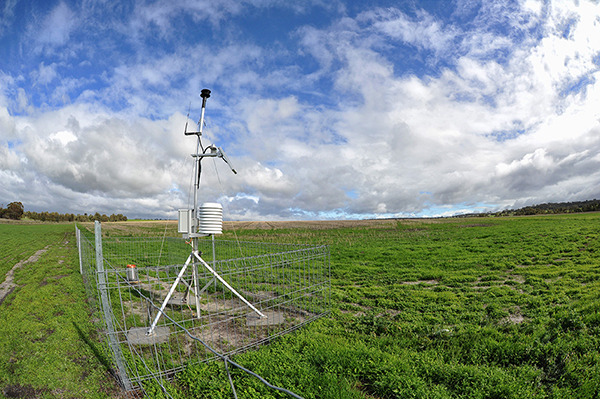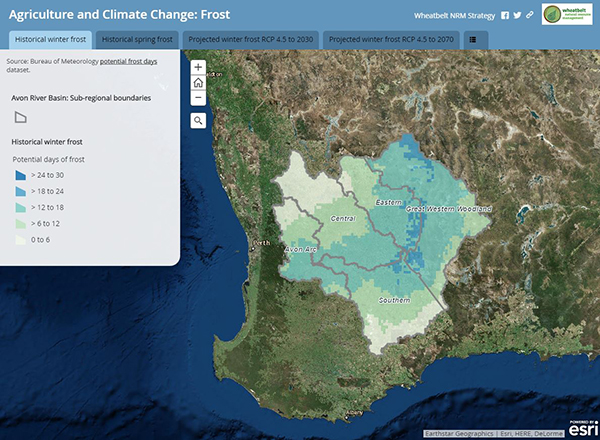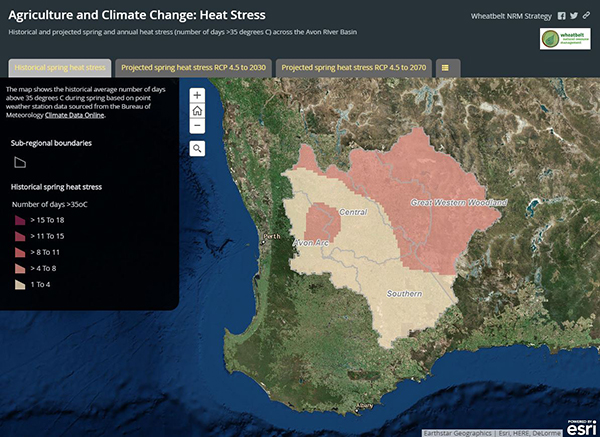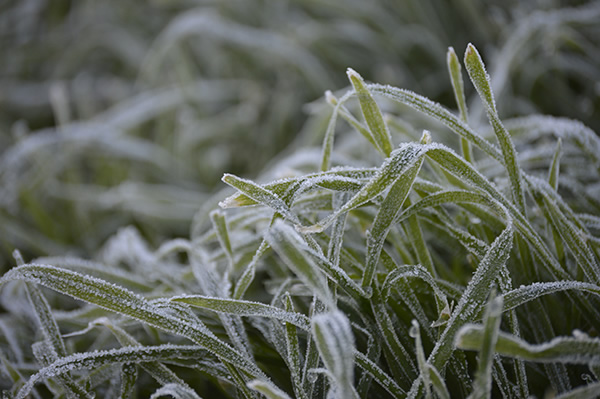On the heels of a pretty bad frost season in terms of crop damage for parts our region, it appears the predicted rising temperatures of spring may also pose a challenge for farmers; in the same growing season. The new Wheatbelt NRM eConnected automated weather station installed at the UWA Future Farm in Pingelly this year recorded a minimum of -2.4C and maximum of 33.1C in October.

Wheatbelt NRM's eConnect weather station at UWA Future Farm
Is this what climate analysts mean by an increase in extreme climate events?
Climate projections indicate that the potential for frost occurrence may decrease into the future (14-54 years from now) due to an overall increase in minimum growing season temperatures; this is the pattern emerging from the CSIRO data presented on the Wheatbelt NRM’s Climate Change Portal.

Frost data on Wheatbelt NRM's Climate Change Portal
Good news right? However, the occurrence of frost is dependent on more than reaching a minimum temperature threshold of less than around 2C; it requires clear skies and tends to be worse in topographic depressions and influenced by soil type and physical barriers in the landscape. So drawing a straight line between frost and temperature is a little simplistic but not a bad start.
In fact, some think that the occurrence of frost may increase in the interim as climate change drives less rain and subsequently less cloud cover promoting frost conditions.
While frost is still here for now, the potential for heat stress (prolonged temperatures above 35C) may be on the rise. The Bureau of Meteorology reported October 2016 as being the warmest on record for our region. If you peruse the heat stress data on the Wheatbelt NRM Climate Change Portal the projections indicate that the number of spring days exceeding 35C may increase from one to nine in the next 15 years. Not excellent news.

Heat stress data on Wheatbelt NRM's Climate Change Portal
Climate projections should be considered in terms of long-term trends and the variability that occurs at shorter time scales will still tend to flip-flop along a general trajectory of decreasing frost events and increasing heat stress risk. Sounds unhelpful?
Fortunately there are a number of practical tools available to help manage the risk on your property:
Frost Potential Maps (Bureau of Meteorology)
Weather Warnings (Bureau of Meteorology)
Planting Decision Support (DAFWA)
Extreme Weather Events Tool (DAFWA)


